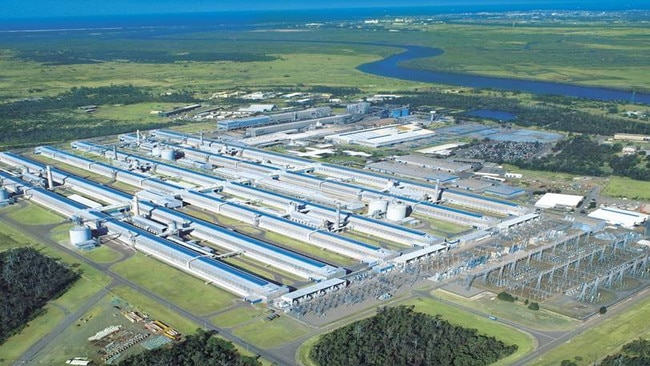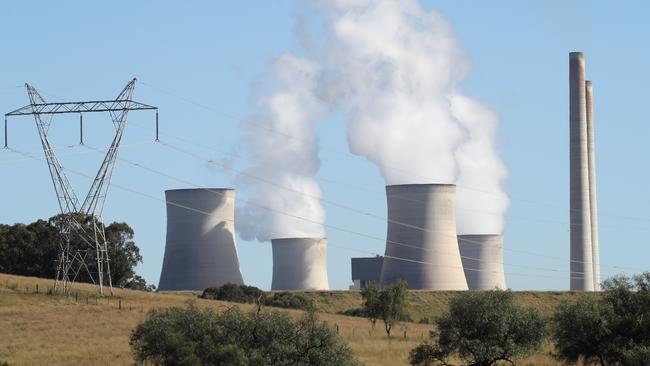Tomago Aluminium smelter plans to swap coal for renewable energy
Tomago Aluminium, NSW’s biggest power user and the nation’s largest smelter, plans to switch its coal supply to renewable energy by 2029 or earlier.

Australia’s largest electricity user is plotting an ambitious green switch to move its coal power supply to renewables by 2029, slashing carbon emissions and underlining accelerating efforts by heavy industry to find clean energy alternatives to fossil fuels.
Tomago Aluminium, the nation’s largest smelter and biggest single consumer of power, has put out a call to industry and technology partners to develop options for creating renewable power generation and energy storage projects to hit its goal.
A formal expression of interest process will open on Monday to develop, invest in or buy long-term traceable renewable energy and dispatchable firm power generation projects or contracts.
It represents one of the boldest moves yet by the manufacturing sector given Tomago requires uninterrupted supplies of electricity around the clock. It comes just months after a tumultuous winter where the smelter was forced to curtail operations to free-up power amid a national energy crisis.
“If it was easy, it would have been done by now,” Tomago chairman David Fallu told The Australian. “But the prize is huge and that’s why we’ll be devoting all the resources we can to find a solution.”
Newcastle’s Tomago – owned by Rio Tinto, CSR and Norsk Hydro – has an 11-year coal deal with AGL Energy, which runs until 2028 and remains the biggest power supply contract ever signed in NSW. However, in May it challenged the power giant to speed up its move to renewables. Its decision to open up the contract to the broader energy market suggests AGL may be in danger of losing its biggest customer later this decade amid broader uncertainty over its long-term strategy.
The tender also creates uncertainty for AGL’s Bayswater coal plant in the Hunter Valley, which supplies Tomago. Bayswater is due to operate until 2035 but may prove marginal without its largest customer.
Tomago said it was working with AGL to boost renewables over coming years. AGL, a 185-year-old utility, is working to develop Liddell and Bayswater into low-carbon hubs with batteries, renewables and green hydrogen and could be involved in any final contract, with the potential to bring forward Tomago’s green goal before 2029.
“We will work with AGL as part of this process as well. The planning work needs to start now so we can look at what the opportunities can be,” Mr Fallu said.

Gas generation is likely to feature in the final energy mix given the need to back up renewables, with Snowy Hydro’s nearby Kurri Kurri station a contender to be part of any contract.
“We do need a 24/7 solution over 365 days, so when the sun’s not shining and the wind is not blowing the long-duration firming is critical,” said Mr Fallu, who represents the joint venture as CSR’s finance chief.
“So I think there will be carbon- based firming as part of a transition solution just simply because of the scale of the challenge and the ability to bring on firmed renewables in the same timetable. But I think we need to see what the art of the possible is and that will shape what that could look like.”
The huge contract will need to provide constant supplies to power the aluminium potlines – buildings housing large electrolytic cells – with Tomago aware of the risks involved in any shortfall.
Tomago said the switch was a huge undertaking, likely to need more than 3000 megawatts of renewables to meet its 950MW needs, given the variability of wind and solar supplies.
“If you want to go fully renewable – to cover yourself sufficiently – you’re looking at three to four times the baseload requirements,” said Mr Fallu.
“We can’t afford a statistical aberration and so that will be part of what we are looking for. An aberration for an aluminium smelter is kind of catastrophic.”
One of Tomago’s owners, mining giant Rio Tinto, has already made a similar push for its giant Queensland smelters, calling for proposals to develop large-scale wind and solar power in the state to supply electricity for its plants and help meet climate change ambitions.
The Tomago chairman expects strong interest, given a giant pipeline of renewable investments planned for the grid, but said back-up in the form of hydro, gas and batteries may prove more challenging, given the amount of coal-based power scheduled to shut down. Delays in both Snowy 2.0 and a slew of transmission projects have officials concerned about a fresh energy crunch.
“There’s a lot of commentary that acknowledges that thermal firming will be required as part of that mix. And when you look at the amount of firmed thermal capacity coming out, how we work with that is something that’s really important,” Mr Fallu said.
“I’m not worried about renewable generation capacity, but long duration firming is probably the solution that hasn’t yet been nailed.”
Former Tomago boss Matt Howell has previously said that firmed renewable prices would need to fall to make the green solution economic for the smelter. Mr Fallu agreed price sensitivity would be critical, given Tomago is a high-cost operation.
“We’re a fourth quartile smelter as we sit here today,” Mr Fallu said. “Realistically that solution does need to be competitively priced compared to where we are today.”
A slew of clean energy plans are being implemented as part of the NSW government’s vision for green electricity, with five renewable zones spread through the state as part of its 20-year energy blueprint.
Four of the five existing coal-fired power stations in NSW are due to expire within 15 years, beginning with the Liddell power station in Muswellbrook, in northern NSW, by April 2023.
They provide 75 per cent of the state’s supply.







